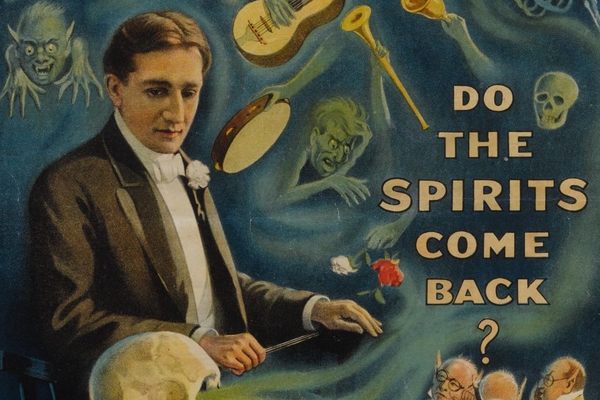For Sale: Fancy Canceled Stamps That Recorded Daily Life in a Connecticut Town
Postage-sized portraits of life during Reconstruction.

A letter sent sailing through the mail generally needs a stamp to pay its way. These are intended to be one-way tickets. To prevent recipients from prying off that prepaid postage and recycling it for another trek to a mailbox, postal services often “cancel” the stamps during transit, to indicate that they’ve been used.
In 19th-century America, this was often accomplished with a scribble or a scrawl, or else by stamping another pattern across the postage with ink. These latter styles were known as “fancy cancels”—and in Waterbury, Connecticut, they were pretty fancy, indeed.
There, a man named John W. Hill enlisted into service during the Civil War, serving as the postmaster for his regiment in the Union Army. When he landed back in Waterbury afterward, he took a job as a postal clerk. The gig wasn’t especially creative, but he kept busy; colleagues remembered him as “the man who works at the post office and is always whittling.”
Over the next few years, he carved slews of designs into cork, concocting a batch of regionally specific cancels.

Some suggest seasons—a pumpkin, various maple leaves, and an acorn with a speckled top, for instance, evoke brilliant New England autumns. Diamonds, hatched grids, pierced hearts, angular rosettes, and a smattering of stars were purely geometric, while a few varieties bore phrases that were in circulation at the time (one read, in spindly letters, “Shoo fly”). A dog speaks for itself—who doesn’t love a Good Boy?

As much as they were functional flourishes, the cancels were also pint-sized portraits of the town’s goings-on.
An elephant is thought to commemorate the circus rolling through in 1866, for instance, while a snowstorm inspired a flurry of flakes. A fireman’s bust is said to have been sparked by the brigade’s parade. There are also references to the national political scene: An “A.J.” design on a tombstone commemorated the conclusion of Andrew Johnson’s presidency in 1869; eight years later, a “Hayes” logo suggested that Hill may have sympathized with Rutherford B. Hayes, the candidate who would just barely beat Samuel Tilden into the White House.

Some of Hill’s cancelled stamps are up for auction this fall as part of a sale of the collection of William H. Gross, a prominent philatelist. New York City’s Robert A. Siegel Auction Galleries, which is brokering the sale, estimates that the Waterbury stamps will fetch thousands of dollars apiece. They’re a rare bunch: In a 1979 volume dedicated to Hill’s handiwork, the Collectors Club of Chicago reported that there were no more than eight stamps of the dog’s head, and no more than five of the fireman.
Estimates vary a bit, but this much is certain: There aren’t very many chances to step into a 150-year-old, stamp-sized slice of life.


































Follow us on Twitter to get the latest on the world's hidden wonders.
Like us on Facebook to get the latest on the world's hidden wonders.
Follow us on Twitter Like us on Facebook